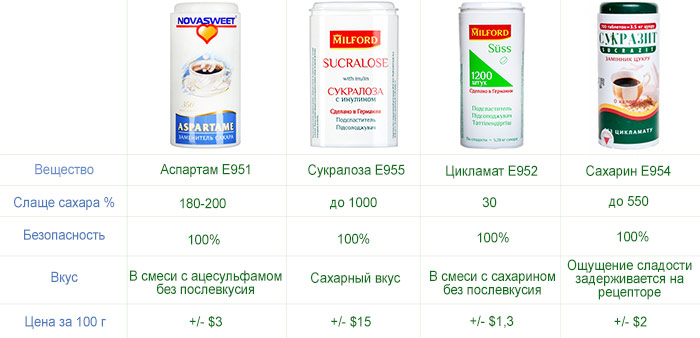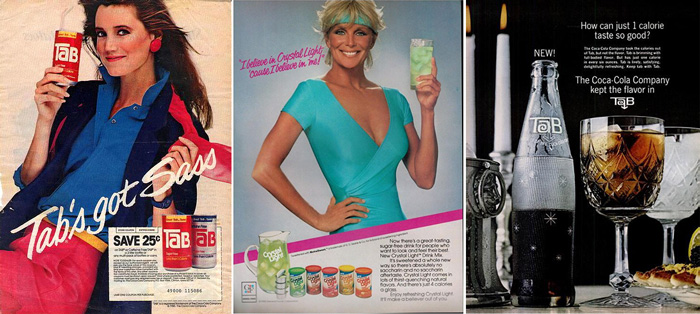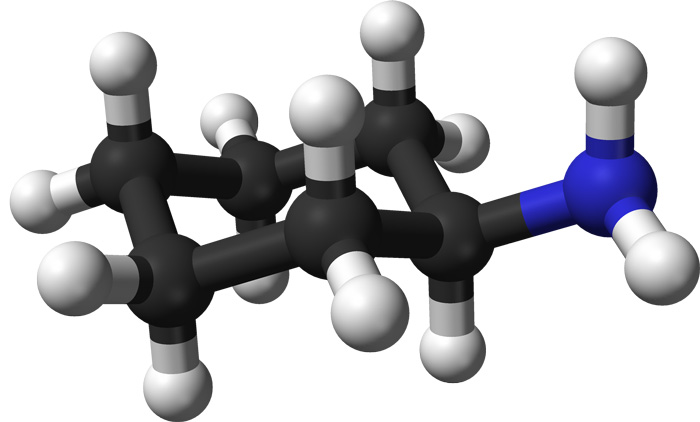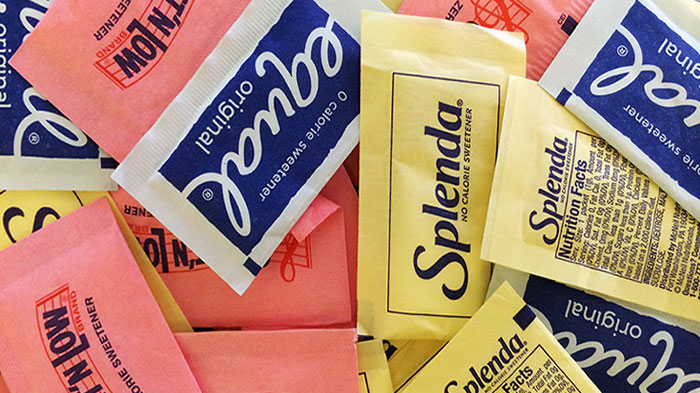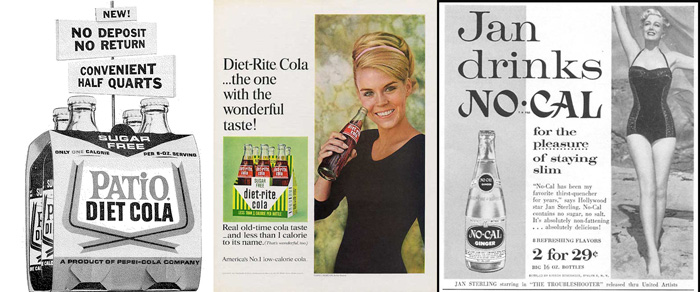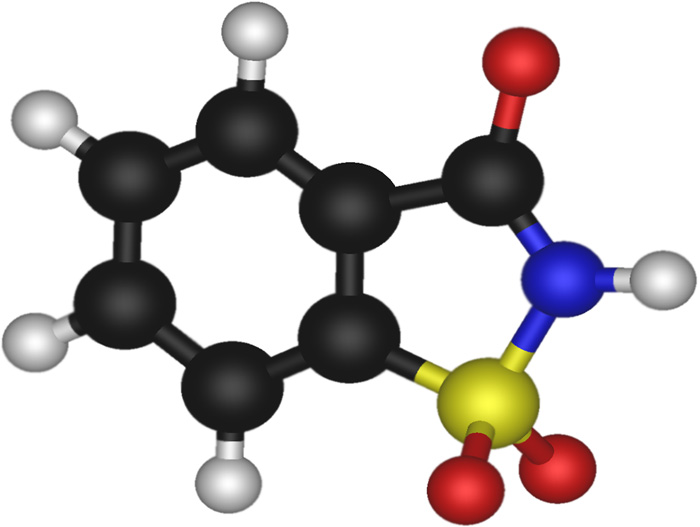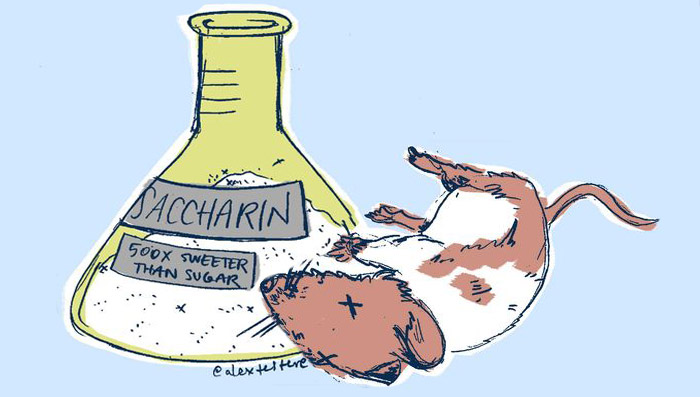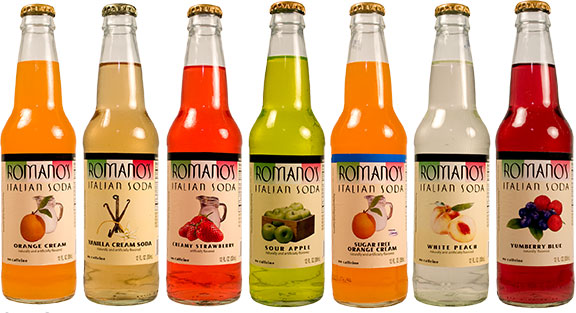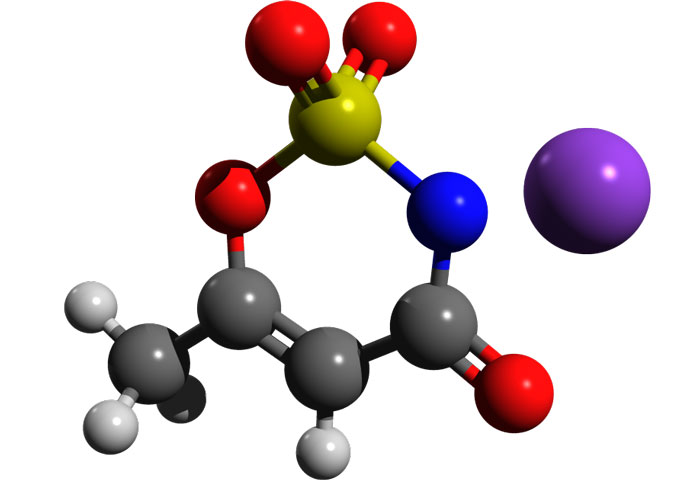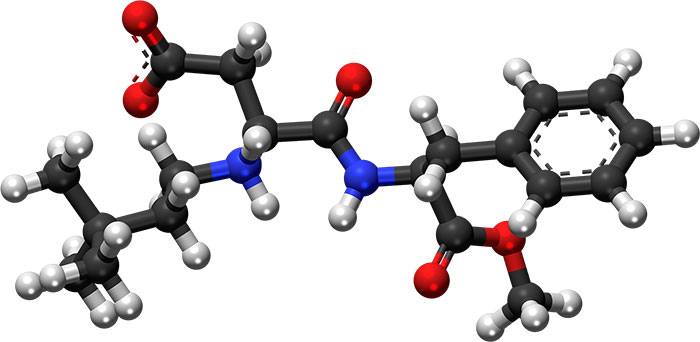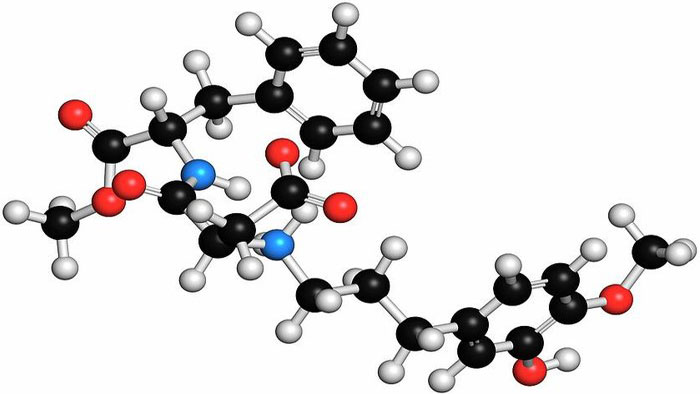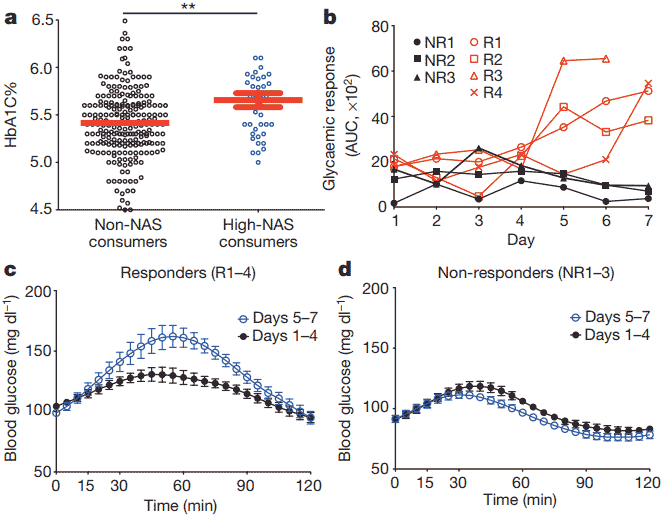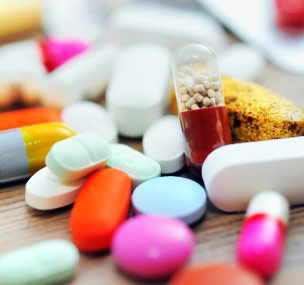Better than Sugar: A Review of the 4 Safest Sweeteners Based on Research
I set out to reduce the amount of sugar in my diet. The main task is to choose a tasty, safe sweetener without calories, with minimal impact on the body. There is a lot of information on the Internet, however, I had to search through the archives of medical libraries and food chemistry textbooks, since there is very little material with links to sources. Most of the articles on the Internet are retellings of myths about the dangers of sweeteners, statements without evidence.
It’s important to read the source, not the yellow headlines, so I wrote this guide for those who don’t have the opportunity to study tons of data on their own. The facts may surprise you…
I settled on the 4 most studied and 100% safe non-caloric sweeteners: aspartame, cyclamate, saccharin and sucralose.
Aspartame E951
It is difficult to find a more studied nutritional supplement than aspartame. It’s a shame that so many resources are spent on studying the simplest safe molecule aspartame, instead of solving truly important health problems.
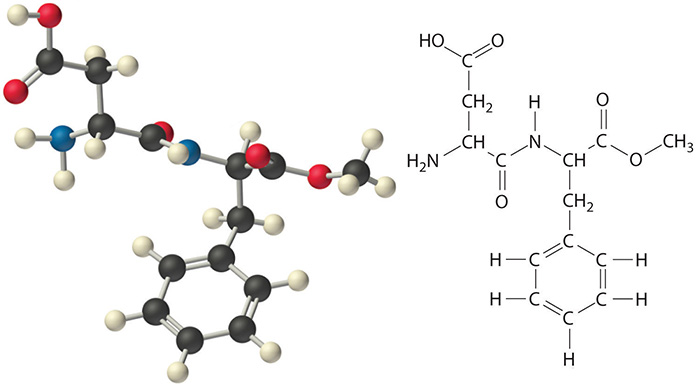 3D model of the aspartame molecule and molecular formula.
3D model of the aspartame molecule and molecular formula.
E951 is a synthetic non-caloric sweetener that is 180 times sweeter than sugar. This sweetness is due to the ability of substance molecules to linger on the taste bud. The book “Sweetness and Sweeteners. Biology, Chemistry, and Psychophysics” describes in detail the mechanisms of sweet taste sensation and its genetic components. I added the book to the file with additional links.
Properties
- Chemical formula C14H18N2O5
- Molecular weight 294.31 g/mol.
- The sweet taste develops a little slower than sucrose, but forms a stronger bond with the receptor. This is due to the aftertaste of most sweeteners - it is more difficult for saliva to wash away their molecules from the receptor.
- Does not cause thirst. Thirst from drinks with sugar substitutes is another very common myth.
- Does not increase appetite or glucose levels (7, 8, 9, 10).
- Does not affect intestinal microflora.
- Loses its sweetness when heated for a long time, so it is not suitable for baking and boiling.
From the discovery of aspartame’s sweet taste in 1965 to today, more than 50 years and more than 700 studies have passed on bacteria, animals, healthy people, diabetics, nursing mothers and even babies (1).
The question arises: if its safety has been proven, why so many controversies and “exposing” programs on TV? Apparently, it’s a matter of metabolites: methanol, formaldehyde and aspartic acid. Let’s sort this out once and for all.
Effect on the body
E951 cannot be detected in the blood, even when exceeding the recommended daily dosage several times. In our stomach, the sweetener breaks down into three lighter molecules:
- Phenylalanine 50%
- Aspartic acid 40%
- Methanol 10%
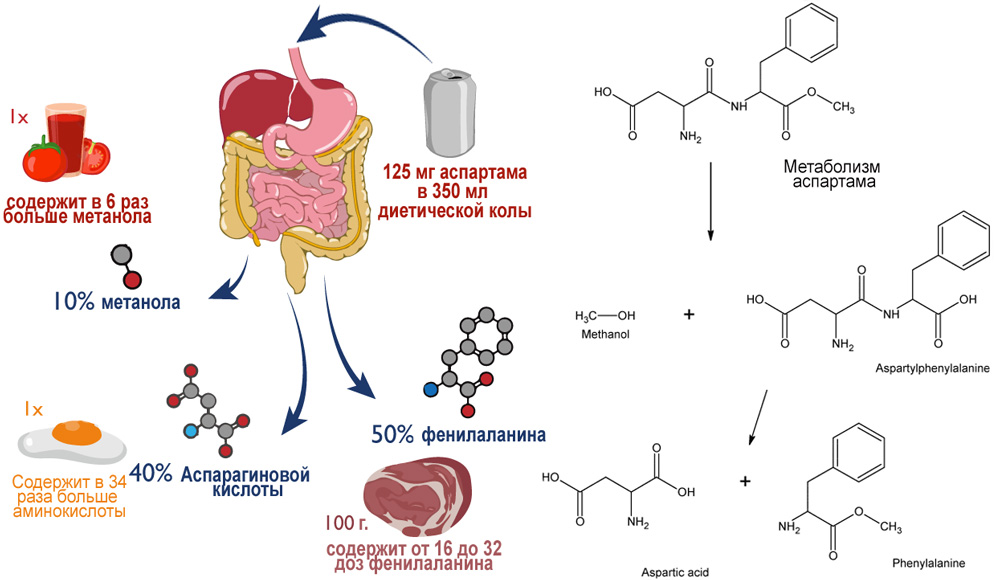 The content of harmful compounds in conventional products is many times higher than in a sugar substitute.
The content of harmful compounds in conventional products is many times higher than in a sugar substitute.
These substances are absolutely normal components of the diet and are even produced by our body.
| Source< /strong> | Phenylalanine content(g/100 g food) | Aspartic acid content(g/100 g food) |
| Soybeans | 1.91 | 4.59 |
| Pea | 1.39 | 2.88 |
| Raw lentils | 1.38 | 3.1 |
| All types of peanuts | 1.34 | 3.15 |
| Chickpeas and beans | 1.03 | 2.27 |
| Flax seeds | 0.96 | 2.05< /td> |
| Pork, salami | 0.94 | 2.1 |
| Beef | 0.87 | 2 |
| Chicken, fish | 0.78 | 1.75 |
| Whole eggs | 0 .68 | 1.33 |
| Whole milk | 0.15 | 0 |
Phenylalanine
It is an essential amino acid required for DNA codons and the formation of melanin, norepinephrine and dopamine. We do not know how to synthesize it and must obtain it from food. Problems with the absorption of phenylalanine occur only in people with the rare genetic disorder phenylketonuria. In 0.5 l of drink with sweetener E951 - no more than 0.15 g.
Aspartic acid or aspartate
An amino acid involved in the biosynthesis of proteins, a neurotransmitter, stimulates the secretion of growth hormone, prolactin and lutein. Aspartate protects the liver from ammonia (2). We can produce aspartic acid, but we partially obtain it from food. 0.5 liters of Cola light contains up to 0.17 g of aspartate.
Methanol
Wood alcohol or methanol CH3OH is found in air, water and fruits, produced by intestinal bacteria and detected in blood, saliva, exhaled air and urine (average level of urinary methanol 0.73 mg/l, range 0.3-2.61 mg/l k) (4).
30 mg of methanol is the maximum you can get from 0.5 liters of aspartame drink.
Dangerous amounts of methanol are present in 5 liters of tomato juice, 30 liters of light cola, or several buckets of sweetened tea. You need to drink it all at once to feel the toxic effects of methanol.
| Example | |
| Fruit fresh and reconstituted juices(orange and grapefruit) | up to 640 average 140 |
| Beer | 6-27 |
| Wines | from 96 to 3000 (Isabella) |
| Beans | 1.5-7.9 |
| Lentils | 4.4 |
| Aspartame soda | no more than 56 |
| Human body and blood | 0.5 mg/kg (0.73 mg/l in blood minimum)< /td> |
Wood alcohol is partially converted to formaldehyde, which has long been suspected of carcinogenicity (linking occupational exposure to poison and upper respiratory tract cancer) (5). But dietary consumption of formaldehyde in vegetables, fruits and sugar substitutes is not dangerous - you need to drink 90 liters of soda per day for two years to cause side effects of consuming the toxin. This is a natural biological compound that is always present in the cells, tissues and fluids of our body in a constant concentration of 0.1 millimol (3 mg/kg b.w.). It does not accumulate and is quickly eliminated.
The metabolism of aspartame and its components is described in detail in Critical Reviews in Toxicology Volume 37, 2007. The review analyzes epidemiological, clinical and toxicological E951 research from 1970 to 2006.
What are ADI and NOAEL
Aspartame ADI (Acceptable Daily Intake) 50 mg/kg body weight, equivalent to 130 cups of sweetened tea. This dose has been approved by WHO, ESFA, FDA, JECFA, SCF and about 90 other organizations in 100 countries.
ADI (acceptable daily intake) is calculated by dividing the maximum dose that does not exhibit toxicity and side effects in animals by 100 (NOAEL no observable adverse effect level). For all approved food E-sheks, their daily and lifelong consumption within the ADI does not affect health.
In other words, you won’t be able to eat more than one percent of the safe dose. I found a good example: the maximum allowable amount of salt is about 6 grams per day (new WHO standards), and the ADI for salt would be 60 mg (6 grams divided by a factor of 100). But we consume about 10-12 g of salt per day at a minimum, thereby exceeding the permissible daily intake by 200 times (6).
Conclusion: aspartame is the best safe sugar substitute for diabetics and people controlling their weight with the only drawback - you cannot add it to baked goods.
Sodium cyclamate E952
A tasty, cheap and safe sweetener without calories. Cyclamate was approved by health organizations in 130 countries (11), and only the United States “distinguished itself.” The story of the E952 is instructive, and I want to share it at the end of this section, but first let’s figure out what it is.
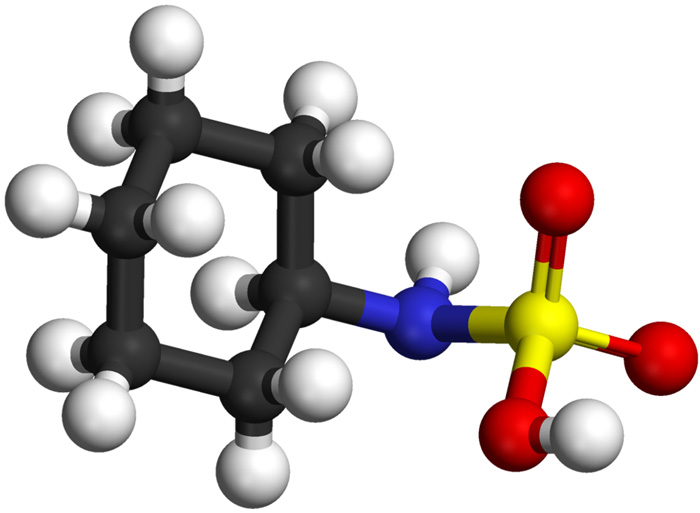 3D model of a cyclamate molecule
3D model of a cyclamate molecule
Properties
- Chemical formula C6H12NNaO3S
- Molecular weight 201.216 g/mol
- Intensely sweet crystalline powder, 30 times sweeter than sucrose.
- Shelf life from 5 years.
- Combined with saccharin and other sweeteners gives a natural sugar taste.
- Masks the unpleasant taste of drugs.
- Does not cause thirst.
- Does not affect blood sugar, appetite, good choice for diabetics.
- Resistant to baking and boiling.
Effect on the body
99.8% of the substance is excreted unchanged in urine and feces, but about 0.2% can be converted by some intestinal bacteria into the toxic hydrocarbon of the amine group cyclohexylamine. A normal daily dose of cyclamate is not absorbed by the intestine and is completely eliminated (12, 13).
Because this amine is neurotoxic, it has been closely studied in the context of its effects on heart rate and blood pressure in diabetics: cyclamate does not affect the heart ( 14 ) .
According to EU laws, food additives are tested annually, the results of observations are analyzed and entered into the register. E952 is no exception and since its inception hundreds of toxicological, epidemiological and clinical studies have accumulated.
Critical Reviews in Toxicology has an excellent review of all the research on the E952 additive since 1968. If I do not have answers to some narrow questions, then this document does have them.
In 2003, the connection between infertility and systematic use of cyclamate was studied, since very high doses affect the fertility of animals. No such association has been found in humans (15). Similar checks are carried out constantly, especially among diabetics, since they are more likely to be on sugar substitutes and are a risk group.
ADI of cyclamate was not determined. The norm prescribed for cyclohexylamine is 11 mg/kg body weight per day. It turns out that in order to exceed the norm of a toxic compound, you will have to eat about 200 grams of cyclamate. But for cyclohexylamine to appear in your intestines, a colony of pathogenic enterococcus must live there. It is impossible to exceed the maximum dose unknowingly.
Why E952 is banned in the USA
Let’s return to the story of the fall of the second most popular sweetener. After receiving a patent in 1939 and until 1951, comprehensive studies of the substance were carried out. Toxicology and carcinogenesis were clear and in 1951 it was approved in the States. By the mid-1960s, no-calorie sugar substitutes had taken over 30% of the market share from sugar in America alone.
This could not continue for long, and in 1968, The Sugar Association initiated “cancer” research on cyclamate, investing $4 million in it.
“Unique” research that has not been replicated to this day
They succeeded: 80 rats were fed a daily dose of cyclamate with saccharin 10:1, equivalent to 105 liters of cola light. After a year, all the rats were alive; after 78 weeks, 50 individuals remained. At week 79, rats are started on 125 mg/kg pure cyclohexylamine(!) in addition to the sweetener mixture.
After 104 weeks (2 years) and daily supplementation of the toxin, 34 rats remained alive, and 39 in the control group. Due to the old age of the remaining individuals, the experiment was stopped and autopsy showed bladder cancer in 8 males out of 80 in the cyclamate group. It turns out that even the pure toxin did not have a significant effect on the development of tumors (17).
After reviewing the results by the FDA, the sweetener was banned in the United States, and due to amendments to the law they cannot return cyclamate to the list of safe substances to this day. The essence of the amendment: if the additive is found to cause carcinogenesis, it will be banned for life. Even if the subsequent hundreds of studies refute this. Health organizations in other countries were not in such a hurry.
The ban on cyclamate was criticized by the entire scientific world. Anecdotes have circulated about dubious studies on rats, as no one has been able to reproduce the results to this day.
Theoretically, there was still a reason for cancer in rats. The point is the unique urine of male rats, which contains the protein α2U-globulin, and the pH is strongly shifted to the alkaline side (from 6.5 and above). The interaction of cyclamate metabolites with this protein in combination with an alkaline reaction probably led to cancer, but it has not yet been possible to consider this mechanism. Below, in the section on saccharin, I will return to this. Supplement E952 does not cause cancer in humans.
Rehabilitation of E952
A 24-year study (from 70 to 94) on three species of monkeys finally defeated the myth that cyclamate is carcinogenic (18). 21 monkeys were fed a sweetener 5 times a week from birth to 24 years of age. The doses were equivalent to 270 liters of soda, or 45 times the daily maximum for a person. The control group consisted of 16 individuals, which were euthanized and dissected at the end of the period together with the subjects.
The sweetener did not affect the general condition of the primates; the “cyclamate” group had only 3 more tumors (cancer of different etiologies), but there were also 5 more monkeys in this group. The study of nuclear and chromosomal DNA of monkeys did not show any atypical damage; mutagenicity was never confirmed for E952.
Conclusion: This is a good calorie-free sugar substitute for diabetes, which has unfairly become the target of black marketing “No Cyclamate”.
Saccharin E954
The world’s first safe sweetener, which has experienced countless ups and downs. The history of saccharin, 120 years long, cannot be described in a few words - it resembles a world-scale spy detective story with Roosevelt, Churchill and Swiss customs in the leading roles (19).
Additive E954 got more than aspartame and cyclamate combined. At the end of this section, I will focus on the most sensational study, the methodology of which caused a stir in the scientific community and almost buried the first safe sweetener.
Properties
- Chemical formula: C7H5NO3S
- Molecular weight: 183.18 g/mol
- Crystalline powder, odorless.
- It has a metallic taste and bitterness in high concentrations, but when mixed with cyclamate it gives sugar sweetness.
- Does not deteriorate for decades.
- Sweeter than sucrose from 300 to 550 times (depending on the production method).
- Fixes and enhances the aroma of products.
- Retains properties in baking.
Effect on the body
Saccharin is not digested and is quickly excreted unchanged in the urine (20). Long-term effects were tested on several generations of different laboratory animals. The results indicate no effect on DNA (21).
Back in the early 20th century, there were concerns that saccharin could be metabolized into sulfamoylbenzoic acid, but laboratory methods have not confirmed this (22). Test-tube studies make it possible to achieve hydrolysis of the sweetener into sulfamoylbenzoic acid at a solution pH of no higher than 5 and only after 48 hours of saccharin being in the solution (no one can hold urine for that long, and pH 5 is far from the norm).
 Synthesis of saccharin according to one of the many patents. It has not been obtained from coal for about 80 years.
Synthesis of saccharin according to one of the many patents. It has not been obtained from coal for about 80 years.
In rats given 50 mg of saccharin daily for a year, 96% of the substance was eliminated within 7 days, after which each organ was tested for remaining radioactive molecules. Individuals that were adequately fed for life recovered 96–100% in urine and feces within 24–72 hours (23).
Problems with the elimination of the E954 sweetener were observed in laboratory rabbits who were given 5 grams of the substance once, with a daily maximum of 5 mg/kg body weight. After 72 hours, the rabbits were dissected and saccharin was found unchanged in the digestive organs of the animals.
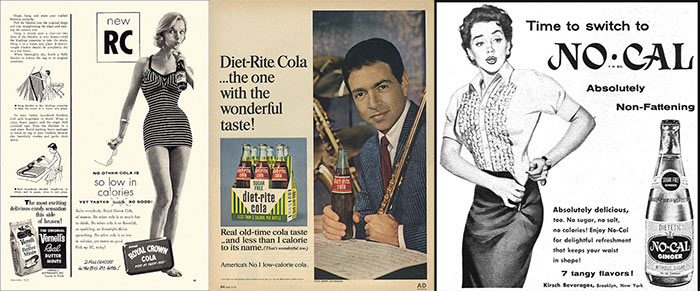 Diet drinks of the 50s with cyclamate and saccharin
Diet drinks of the 50s with cyclamate and saccharin
Epidemiological studies of bladder cancer in humans among 40,000 cases of cancer of various etiologies found no association between this disease and the use of sugar substitutes. The groups included diabetics who had been consuming the sweetener for decades.
The “cyclamate” scenario did not work
Let me return to the experiments on rats that could have put an end to the saccharin era. The situation exactly repeats the “cancer” study of cyclamate. In March 1977, Canadian scientists succeeded in causing bladder cancer in rats.
A schedule was immediately drawn up for the gradual ban of the substance in Canada, despite the fact that preliminary results were widely considered premature. In the USA they tried to do the same thing, citing the amendment. The American Cancer Society and the Diabetes Association discouraged this without reproducing the study themselves because the Canadian methods were appalling.
One of the most shameful studies in the history of science
Two generations of rats, from birth to natural death, were given 12 grams of saccharin daily (400 liters of soda per day). In the first generation, 3 out of 100 rats developed bladder cancer, in the second - 14 out of 100, and only in males (24). I couldn’t find any information about the control group to compare the number of tumors.
The FDA harshly criticized the study and pointed out that even if a person completely replaces sugar with saccharin in the diet, consuming more than 2 mg/kg b.w. impossible. The animals were forced to receive thousand-fold doses of E954, and at the same time died of natural causes in old age. The absurd Canadian experience provided impressive evidence of saccharin tolerance.
The probable cause of cancer is a huge amount of sodium and calcium saccharin crystals, which irritate the walls of the bladder of animals, which are naturally prone to the accumulation of various salts. This leads to increased cell division and, as a result, cancer. Can you imagine the pain these rats endured their entire lives? Anyone who has had renal colic understands this well…
Conclusion: The history of saccharin can tell us a lot about our society. Very soon, the oldest safe sweetener will be replaced by modern, tastier competitors. In the meantime, I’ll wait for neotame to appear in stores and drink tea with E954.
Sucralose E955
A semi-synthetic sweetener synthesized from sugar by chlorination of sucrose. One of the most delicious and safest calorie-free sugar substitutes in the world (29). And the most expensive, unfortunately.
As always, the discovery of the substance’s sweet taste was accidental, but since then, in 1976, various modifications to the sucrose molecule have made the substance up to 1,000 times sweeter than sugar. In the EU, the additive received its E in 2004, and it took more than 20 years to test it.
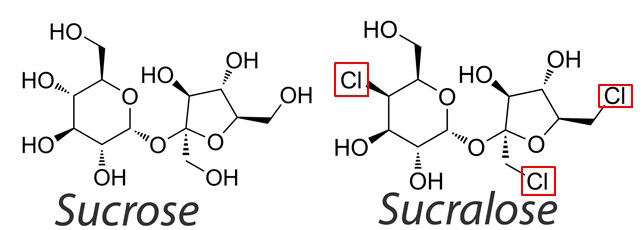 Chlorine molecules replace 3 hydroxide molecules.
Chlorine molecules replace 3 hydroxide molecules.
Properties
- Chemical formula C12H19Cl3O8
- Molecular weight 397.626 g/mol
- Intense sugar sweetness.
- Does not provoke insulin production and has no effect on intestinal microflora (27, 32).
- Does not increase the feeling of hunger (35).
- Retains sweetness when baking.
- Due to the very high concentration of sweetness, E955 is mixed with modified starch or maltodextrin for tabletop tablet forms - their glycemic index negates the benefits of sucralose for diabetics. The same problem with stevioside.
- Does not have any aftertaste.
Effect on the body
E955 is not digested: 86% is excreted in feces, 11% in urine and about 3% as a compound of glucuronic acid and sucralose. There were concerns about the chlorine content in the compound, but they turned out to be unfounded - E955 does not undergo breakdown in the digestive tract and is quickly eliminated without accumulating in tissues and organs.
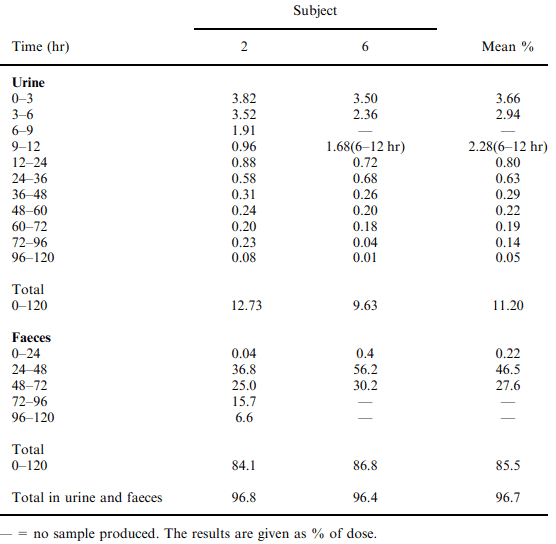 Excretion of 14C-sucralose (radioactively labeled to facilitate detection) in urine and feces. 2 volunteers. Dose 10 mg/kg once.
Excretion of 14C-sucralose (radioactively labeled to facilitate detection) in urine and feces. 2 volunteers. Dose 10 mg/kg once.
The pharmacokinetics and pharmacodynamics of the substance are well described in the study Sucralose Metabolism and Pharmacokinetics in Man for 2000. The excretion table is right there.
In mice, sucralose provokes the release of insulin-like hormones through sweet taste receptors inside the gastrointestinal tract (this is a discovery of the last decade), but in humans this mechanism turned out to be much more complex - the supplement was unable to increase insulin levels in people when the solution was infused (33). Just taste is not enough for us, without carbohydrates and glucose.
 Sucralose does not affect insulin and glucose levels
Sucralose does not affect insulin and glucose levels
Hundreds of animal studies have been conducted, including those initiated by WHO, UN, JECFA, FDA, and only one in 2008 showed an effect on the intestinal microflora in rats (28). The animals were given Splenda, a commercial mixture of maltodextrin and sucralose. Scientists concluded that the sweetener suppresses beneficial bacteria, reduces the bioavailability of food and provokes weight gain.
The study created a media frenzy and received intense attention from the scientific community because its results contradicted two decades of clinical and epidemiological observations. Criticism was not long in coming. Data manipulation and a host of extremely careless errors were exposed. A full review and critique is published in Regulatory Toxicology and Pharmacology .
Carcinogenesis, chronic toxicity, and genotoxicity have never been confirmed for sucralose (30).
ADI of sucralose 15 mg/kg body weight per day. Actual supplement intake depends on a person’s dietary habits. E955 is now increasingly being added to ketchups, desserts, drinks and other products. In this regard, two thousand American families were observed for 2 weeks. The researchers calculated the amount of sugar in the volunteers’ diets and replaced it with sucralose (empirically). The figure turned out to be 14 times less than ADI. In a word, it is impossible to exceed the permissible maximum.
Conclusion: sucralose is the best non-calorie sugar substitute at the moment, but for industrial use. As a tabletop option, it has to be mixed with fillers, which, unfortunately, contain calories.
Acesulfame potassium. Sweetener flavor enhancer
E950 is almost always paired with aspartame and cyclamate as an enhancer and flavor enhancer for sweeteners. If acesulfame potassium is added to sweeteners, the mixture becomes twice as sweet and closer to the taste of sugar. It is never used on its own, nor is it necessary.
The substance is excreted 100% by the kidneys, unchanged. ADI of acesulfame 15 mg/kg. In Europe the norm is 9 mg/kg.
Acesulfame-K has a low level of acute and chronic toxicity, two times lower than that of table salt (and it is added incomparably less). This is due to the fact that it is not metabolized and does not accumulate. In the USA, in October 2005, in the context of the National Toxicology Program, a study was conducted on the effect of the substance on mice. In this case, mice from two strains with a tendency to form tumors received a daily dose of acesulfame-K equal to 4-5 g/kg b.w. within 9 months. Tumors did not develop more often than in the control group. The amount of acesulfame corresponded to a daily intake of 315 g for a person weighing 70 kg (25).
Sugar modifier S6973 and S617
Sweet taste enhancer. In 2012, the JECFA Food Additives Commission issued a positive opinion on the safety of these compounds. Thanks to the modifier, you can reduce the amount of sugar in the product by 50% while maintaining the intensity of sweetness. A review of toxicological studies Toxicological evaluation of two flavors with modifying properties S6973 and S617 was published in Food and Chemical Toxicology .
- Chemical formula C15H22N4O4S
- Molecular weight 354.425 g/mol
The additives have extremely low bioavailability, are not absorbed in the intestines, and do not exhibit genotoxicity or cytotoxicity (2 generations of rats). Modifier studies were conducted on rats and monkeys during 3 months of feeding at a daily dose of 20 mg/kg and 100 mg/kg. Maternal toxicity test (effect on the fetus) - 1 gram per kg did not have any effect. Toxicology is clear. All details with graphs are available at the link above.
So, if you find sugar modifier S6973 or S617 in a product, you will already know what these additives are. They say that somewhere on sale there is sugar labeled “sweet” that contains S6973, but I haven’t seen it.
Natural sugar substitutes and a new generation of synthetic ones
Of the natural, calorie-free sweeteners, the only available stevia extract is Stevioside E960, which tastes like rusty nails. There will be a separate article on stevioside, but I do not include it in my rating of tasty and safe sugar substitutes.
Chemists are developing a number of super-sweet and expensive compounds of plant origin: curculin, brazzein, glycoside from Monk fruits, miraculin, monatin, monelin, pentadin, thaumatin (E957). If you set a goal, almost all of this can be bought and tried right now.
All other substances, such as fructose, erythritol, xylitol, sorbitol and others, have non-zero calorie content. I won’t write about them.
Neotame
A modified form of aspartame, 8000 times sweeter than sugar on average. Resistant to baking, has a zero glycemic index. Safe for people with PKU. Its metabolism differs from aspartame: only 8% methanol will be obtained from the E961 molecule. The volume of aspartame is 40 times less. Although these applications remind me of marketing in the spirit of “non-GMO mineral water.” You have already seen about methanol from aspartame in the tables above.
ADI of neotame 0.3 mg/kg bw or 44 cans of cola on E961 (they don’t make that one yet). It is currently the cheapest synthetic sweetener: 1% of the cost of sugar.
Advantame
The newest sweetener, which has not yet received its E. It is made on the basis of aspartame and isovaline, but is 20,000 times sweeter than sugar. Due to the homeopathic quantities in the product, it is suitable for phenylketonurics. The Advantam molecule is stable at high temperatures. Not metabolized by the body. Advantam ADI 32.8 mg per kg body weight. The FDA approved the substance in 2014 after a series of animal tests. But we are unlikely to try it as a homemade sweetener in the near future.
Not only advantame was developed based on aspartame. A few sweeter options than E951: alitame E956 (trade name aklam), Acesulfame-aspartame salt E962 (I drink Pepsi with this mixture, delicious), neotame.
The connection between diabetes, obesity and sweeteners. Hypotheses and facts
There are several hypotheses linking obesity and diabetes to non-caloric artificial sweeteners. I conducted a separate investigation on them, since this was the topic that bothered me most. Let’s go through the most popular hypotheses and factual data.
Sugar substitutes make you want to eat more sweets
Anything tasty makes you want to “repeat” (36). This property is associated with endorphins. The production of endorphins is a reaction to glucose in the blood and pleasant taste sensations. The hypothalamus actually motivates us to eat tasty, fatty, sweet foods (37).
Clinical experiments show that the level of stress hormones decreases and endorphins increase from both sucrose and saccharin (38). If you’re going to eat away stress, then do it with something tasty and light at the same time.
The analgesic properties of sweet taste were studied in infants. An experiment with a prick of the heel of a newborn established the analgesic effect of a sweet taste without the participation of glucose (cyclamate + saccharin). Sugar solutions and honey should not be given to infants as a sedative or pain reliever due to the risk of developing necrotizing enterocolitis, so scientists are always looking for a harmless alternative (39).
Conclusion: if we enjoy the taste of a product, then we want to eat more. Regardless of whether it contains glucose, aspartame or stevioside. Amino acids do the same thing to our taste buds.
Sweeteners trigger insulin production
There is a saying that a sweet taste causes insulin to be produced, catastrophically reducing glucose levels. This is wrong. Insulin reacts slightly to signals from taste buds; it cannot even be detected using laboratory methods. The “release” of the hormone occurs only when blood glucose increases (40).
Conclusion: Everything that enters the mouth and tastes like food (amino acids, etc.) causes a weak pancreatic response, and then everything depends only on blood glucose (41).
Research in pediatrics
In 2011, the medical publication Pediatric Clinics of North America published a review of 70 studies on the effect of artificial sweeteners on the metabolism and weight of children, initiated Research Program of the National Institutes of Health (…). The review focused on four FDA-approved substances: aspartame, saccharin, neotame and sucralose.
A few points from the review:
- There is no direct correlation between sweeteners and obesity in children, but overweight children drink more light drinks (logical, in my opinion).
- Probably, knowledge of the low calorie content of a product leads to a cognitive error - the so-called overcompensation of calories: we allow ourselves to eat more. This phenomenon has been well studied in products labeled as “low-fat”: a person eats 2-3 times more, because “it’s not fatty.”
- The effect on intestinal bacteria is not confirmed by high-quality placebo-controlled studies, but work in this direction continues. There is some questionable data only for saccharin (see below).
- Non-calorie sweeteners do not affect the production of glucoregulatory hormones such as insulin.
Is calorie overcompensation real?
Several dozen studies have focused on caloric overcompensation when consuming sweeteners. I found two clinical observations most interesting:
- 8 obese patients were kept in a hospital and did not know that they were participating in the experiment for 15 days. Sugar in their diet was secretly replaced with aspartame (it was 1977, then this could have happened without trial). Hidden sugar replacement resulted in a 25% reduction in calorie intake without overcompensation. People didn’t know that their diet had become less energy-intensive, so the thought of “addition” did not arise. Unfortunately, 8 people is not a sample, but it is an interesting observation (42).
- A group of 24 volunteers received cereal breakfasts for 5 days: unsweetened; with sugar; with aspartame. Half of the subjects knew the full composition of breakfast; for the second half of the group the composition was not reported. In the second group, none of the options had an effect on subsequent meals, but in the first group, those volunteers who knew that their breakfast did not contain sugar compensated for it with “reward” later.
Conclusion: in a word, for a person it’s not a matter of physiology at all - when you know that coffee contains not 3 tablespoons of sugar, but a sweetener tablet, then you can easily afford 3 candies or heavy cream. I know this too well from my own experience, and the “outside perspective” of such experiences allows me to better control myself and not make such cognitive errors.
Effect on feelings of hunger and thirst
Water with sugar does not quench your thirst. Pure water is best, water with sweetener is a little worse (43). Another question is whether it’s worth drinking anything other than water when you’re thirsty. The effects of sweetened drinks on hunger are an equally well-worn topic of research: Diet soda with aspartame 30 minutes before lunch significantly reduces subjective hunger, compared to mineral water of the same volume (44, 45).
Sweeteners lead to weight gain
Depending on the methodology, research results vary significantly:
- Experimental clinical studies show that replacing sugar with sweeteners either reduces weight or maintains it unchanged. A review of the evidence did not support the concept that sugar substitutes lead to increased caloric intake and weight gain (46).
- Observations without clinical supervision, or based on completed questionnaires, converge to weight gain and correlations with the use of sweeteners.
When you read a high-quality, double-blind, randomized, placebo-controlled study, the result is always in favor of losing weight or maintaining weight. One such example is a study of the effect of sugary soda on the weight of children in the Netherlands. 642 children from 5 to 12 years old took part in it. Conclusion: Reducing liquid sugars is more effective in reducing weight than cutting other sources of calories (47,48)
Another children’s study shows that sweetened drinks an hour before meals suppress appetite better than water. This is good for an overweight child, but bad for an unwilling one (49).
Impact on the gut microbiome
This conclusion was reached by Israeli scientists from the Department of Immunology, Weizmann Institute of Science. The study was published in Nature in 2014 (50).
“Artificial sweeteners cause glucose intolerance by altering the intestinal microbiota” is the title under which the material was submitted to a peer-reviewed journal. The researchers were lying for the sake of a beautiful headline - only saccharin was involved, the generalization was a “dirty” trick.
Scientists argued that in mice on a daily mixture of saccharin and glucose, certain types of microorganisms that produce glucose begin to multiply. Sterile mice were injected with the feces of experimental subjects and they also began to have problems. The mice were later given antibiotics and the effect wore off within 4 weeks.
Next, a six-day study was conducted on 7 people of different ages and genders (!), who were given 10 sachets of sweetener per day. After 6 days, human feces were injected into sterile mice, and their glucose levels increased. Four of the volunteers began to show the same symptoms (no).
What’s wrong with this study?
- The animals did not receive pure E954, but sugar + saccharin (95% sugar), which could well have contributed to more active growth of bacteria, some of which produce glucose. This is exactly what has been proven in hundreds of studies on sugar (51).
- Only an observation is described, without a mechanism for the occurrence of glucose intolerance. No analysis of the obtained data is carried out. After all, E954 has survived hundreds of similar studies over a hundred years. Injections of saccharin, intraperitoneal administration, feeding and other manipulations that are not related to reality have never led to such results.
- Seven people are not a sample. Usually, even I don’t read such studies, and it’s not clear how this got into Nature. If they tried to publish such material in a clinical journal, it would be rejected.
- Sterile mice were given human feces and they became ill. I don’t even know how to comment on this.
- Lack of control over the use of the substitute; the diet of the volunteers was not described. By the way, half of the group endured 6 days on saccharin without any changes.
The data in the graphs was combined on days 1-4 and days 5-7, and put into two waves. If we plot the graph from days 1 to 7, the results do not show statistical significance.
Microflora graphs were built from days 1 to 7, but the third volunteer on day 5 had some magical results that influenced the construction of the curve. If we consider that the growth of “diabetic” bacteria is associated with a high-protein diet, yogurt, and alcohol, then saccharin has nothing to do with it at all. But we don’t know what these people ate.
 The influence of a certain diet on the reproduction of intestinal bacteria
The influence of a certain diet on the reproduction of intestinal bacteria
A strange study that contradicts data accumulated over 100 years. The conclusions of such experiments can influence political decisions, as happened with cyclamate. It is good that reviews of the accumulated evidence are published periodically, and there is no need to rely on only one opinion (52).
That’s all. If you read to the end, the work was done in vain. Of course, I don’t have all the answers, and if I missed something, ask in the comments, I’ll look for it!
Links
All links from the article are collected in one file on Google Drive , with comments and a book about the evolution of taste.
Popular scientific video with neurologist Nikita Zhukov (creator of the execution list of drugs ) about sweeteners:
